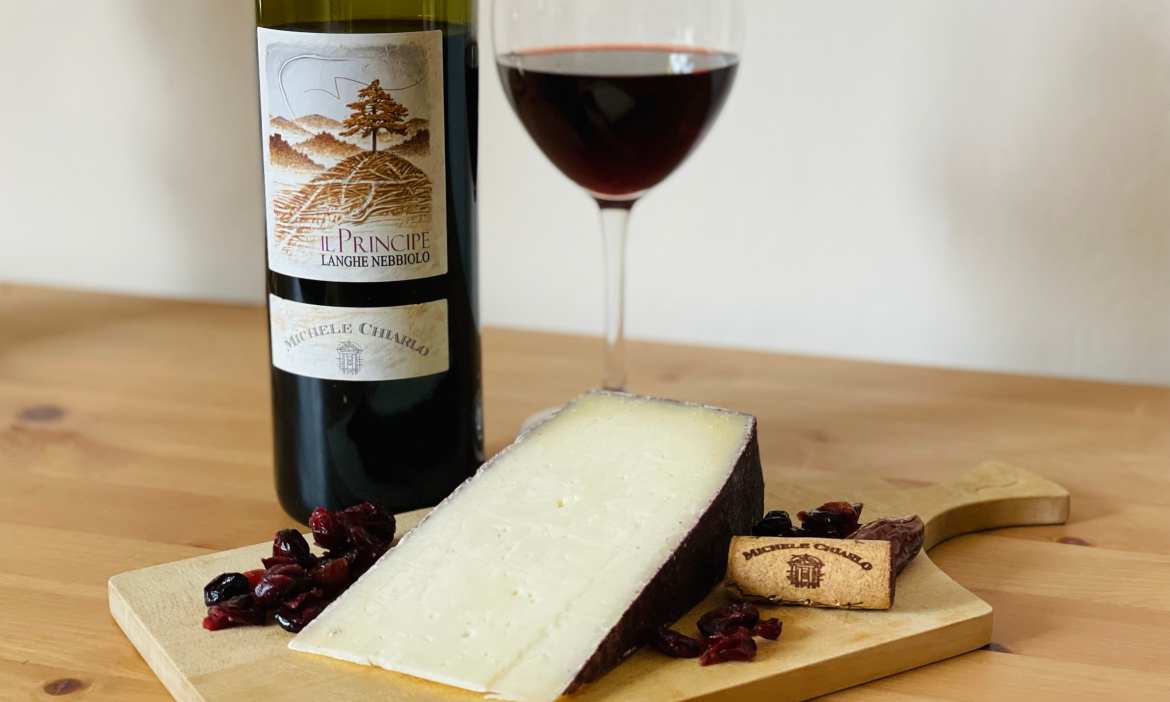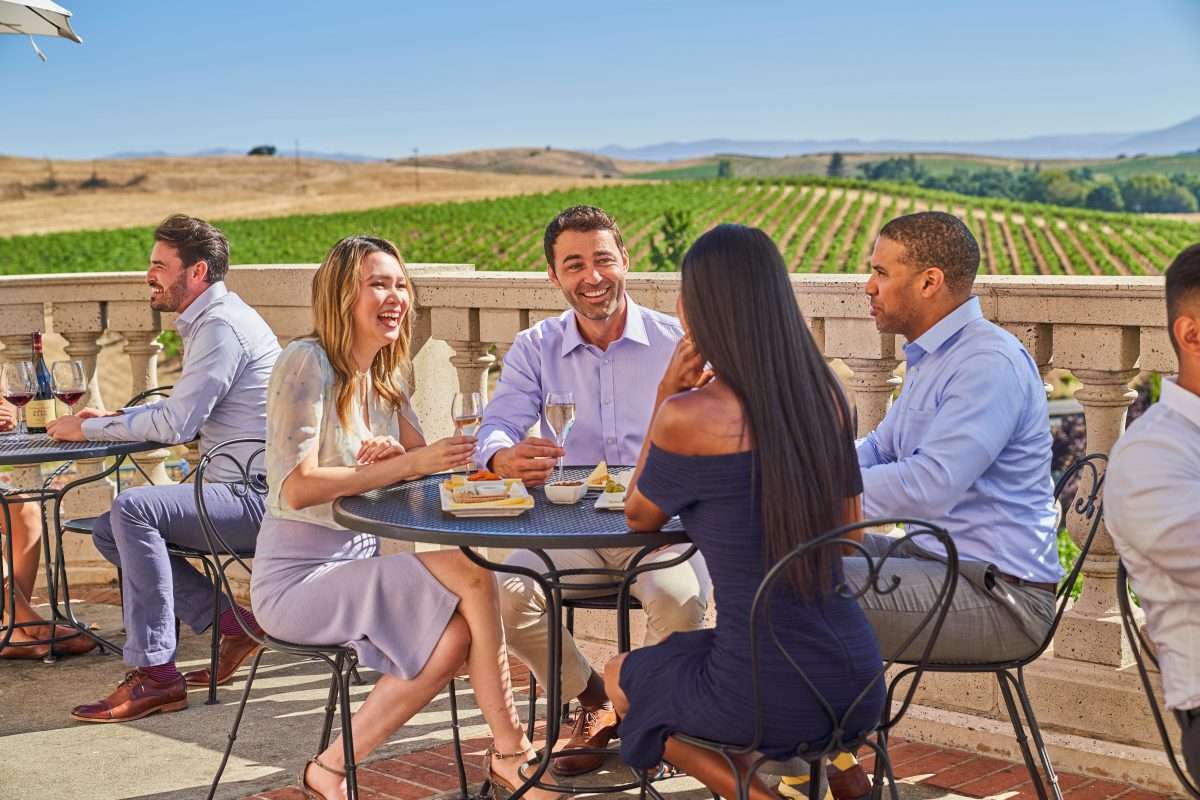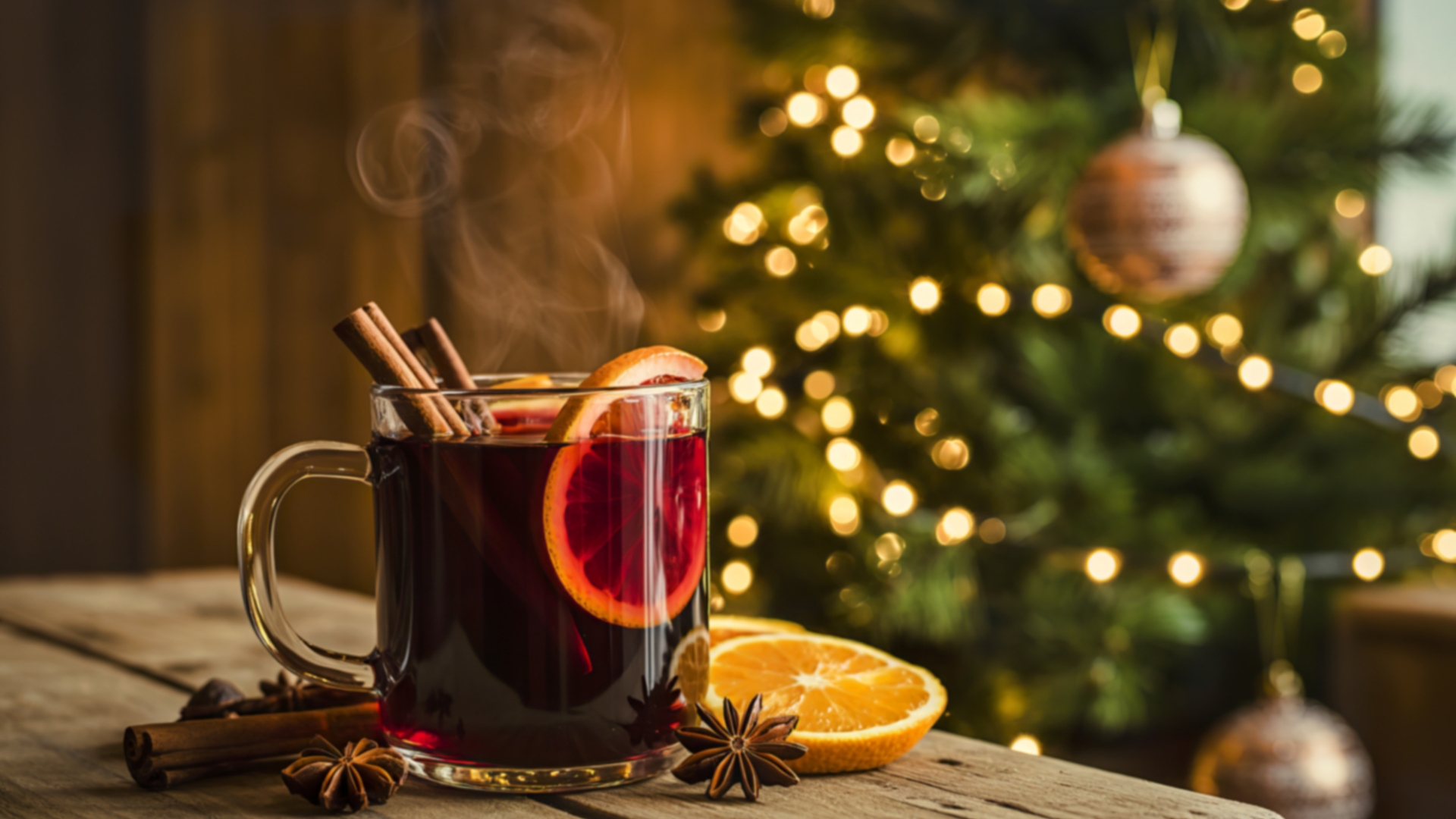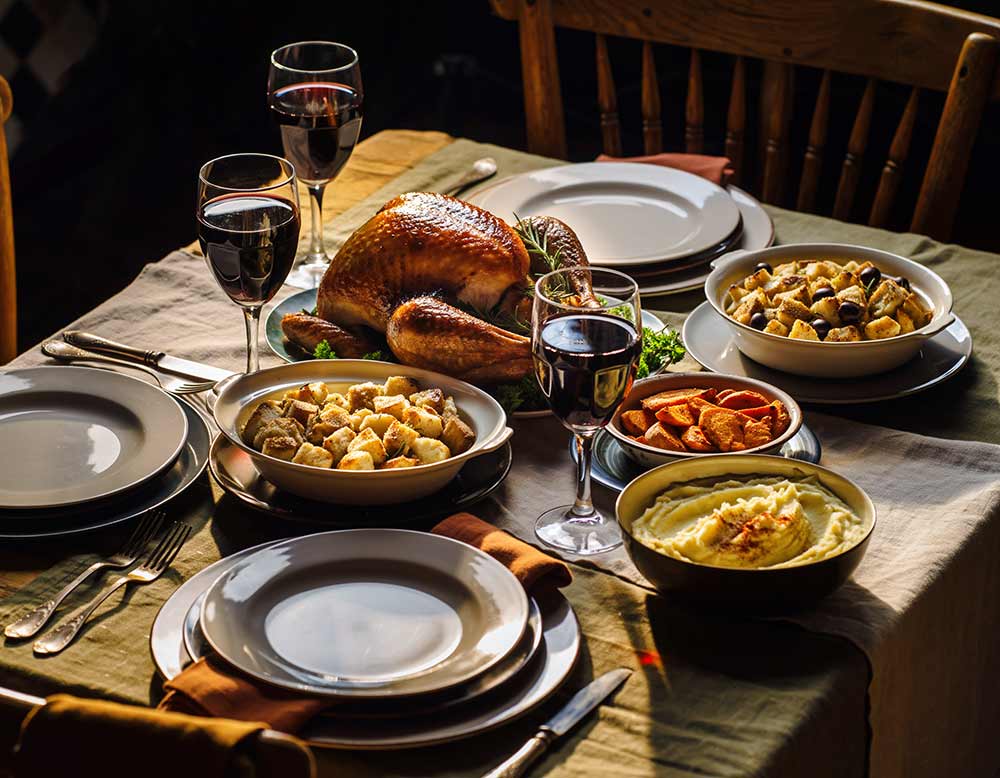With distinct cheese and grape varieties numbering in the thousands, Italy’s wine and cheese pairing game is arguably the best in the world. At the very least, it will keep you tasting for several years with no repeats. Two to try today: Robiola Rocchetta with Barbera and Ubriaco di Raboso with Nebbiolo.
A Numbers Game
Italy has the most native grape varieties of any country in the world. The number varies—widely—but even on the low end of the scale at around 700, the “boot” kicks everyone else out of the running (we don’t even need to bring out Ian d’Agata’s Native Wine Grapes of Italy, which estimates over 2,000). Winemaking in Italy has been practiced for millennia. In a country fractured politically for almost as long, with myriad populations, local cultures, and a diverse terroir conducive to winegrowing from the Dolomites to Mount Etna, everyone and their zia was making vino. Therefore, plenty of time passed to allow grapes to evolve in diversity and be passed down among generations.
Like their wines, Italians also have great quantities of very good cheese. And this is true for many of the same reasons: diverse populations created their own food cultures and upheld culinary traditions in a land ripe with livestock—sheep, goat, cow, water buffalo—with varying conditions perfect for cheesemaking. Plus, they’re already fermenting one thing, so why not a second? (I assume this was one line of reasoning, portrayed by a man holding out his hands and shrugging in a very Italian gesture)
Indeed, over 1,000 types of cheeses are made in Italy: by some counts, that’s one for every wine! We’re going to start exploring that diversity today with two Italian cheeses and two Italian wines: our Italian Duo, courtesy of Artisanal Cheese.
Italian Wine and Cheese Pairing
Robiola Rocchetta: Triple-Cream Delight
This triple-cream round Robiola Rocchetta is a delightful trio of milks, textures, and flavors. I adore a robiola (you can see I couldn’t even photograph the full round because I ate it immediately). From Bosia in Piedmont, Italy, it is made with cow, sheep, and goat’s milk. The rind is a tender casing that holds the more liquid-creamy layer right underneath, together with the smooth, spreadable center. The texture thickens over a week or two (if you can leave it that long). The flavor is complex and amazing: there is a bit of under-riding pungency, in a good way that only a cheese knows how to do, with very wholesome and rich, buttery flavors. It was delicious with dried cranberries or, as I enjoyed, smooshed between two water crackers like a little sandwich.
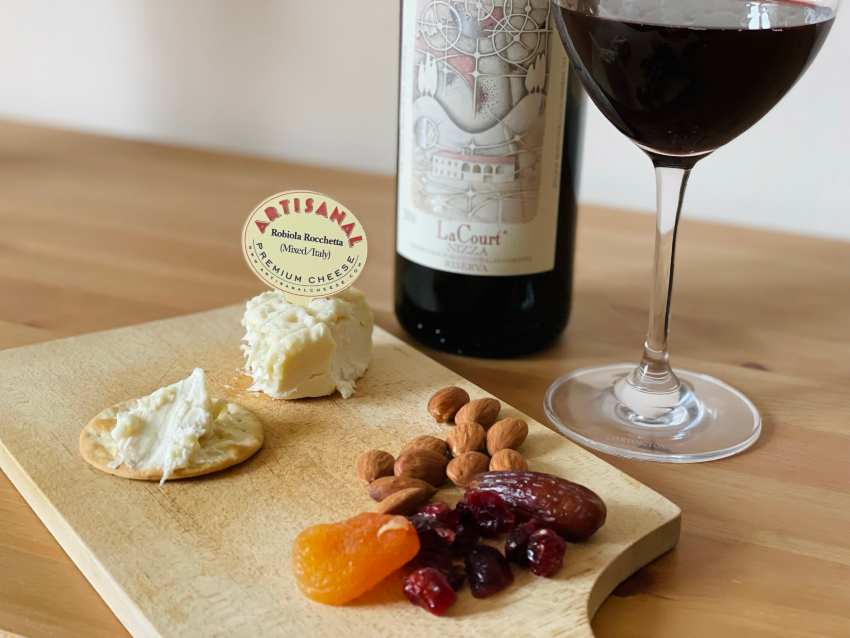
The Robiola Rocchetta would pair well with sparkling wines and Chardonnay—a high-acidity Chenin Blanc or even a full-bodied but not overly-oaked California Chardonnay would work very well. But its unexpected pungency can be somewhat strong if you’re new to robiola and are expecting a tame little brie. Therefore, try a lighter red. I chose wine made from a grape native to the same region: Michele Chiarlo La Court Nizza Riserva DOCG, a 100% Barbera wine. Barbera is known for its zingy acidity, and the sub-appellation Nizza comes from a smaller delineated region and is aged longer. These Barberas tend to be more velvety and rich than the Basic B. The springy acidity was a wonderful foil to the creaminess, while the notes of dark plum and violet complemented it deliciously.
Ubriaco di Raboso: Drunken Little Formaggio
In Italian ubriaco means “drunk.” This title is given not just to people who’ve imbibed a little too enthusiastically, but to cheeses that are aged for a period of time under grape marcs: the leftover skins and stems from maceration, i.e. the solids that don’t go into the final wine. Ubriaco cheeses are made throughout Italy, but this one from Treviso in Veneto is special. A semi-hard cow’s milk cheese, it is aged for 12 months, with a period of time in local Raboso IGT wine and marcs following the first six months of aging. This infuses the cheese with a subtle yet unmistakable aroma and flavor of wine. You could almost say it has a built-in wine pairing…but no ABV is transferred to the cheese, so I made sure we got some.
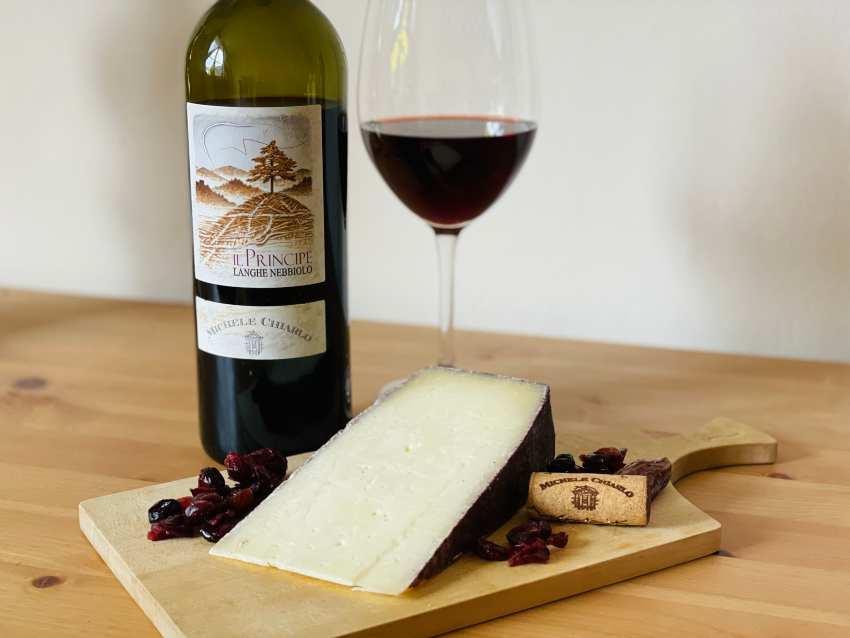
A Cabernet Sauvignon or Merlot will go well with this (including, according to Artisanal, a hoppy IPA—agreed!). But I stayed with Michele Chiarlo and paired Il Principe Langhe Nebbiolo. The cheese has a hay-like aroma and great nuttiness in addition to the grapey-winey nuances—a really unique cheese that played well with Nebbiolo’s flavors, which are unexpected for a red: though light in color, Nebbiolo carries lots of flavor and body. Over time after opening, its red fruit flavors come out even more. I suggest opening the bottle and setting out the cheese a good two hours before tasting (as Artisanal notes, this is recommended for all cheeses). To be honest, the wine was even more expressive the next day, and paired even better.
Just keep nibbling cheese and sipping wine ‘til you find your sweet spot.
What are you waiting for? You have 999 cheeses and wines to go (at least)! Head on over to Artisanal Cheeses today to get started.
Don’t miss out on Artisanal’s other cheese collections, like the French trio paired with Loire Valley sparkling wines.
